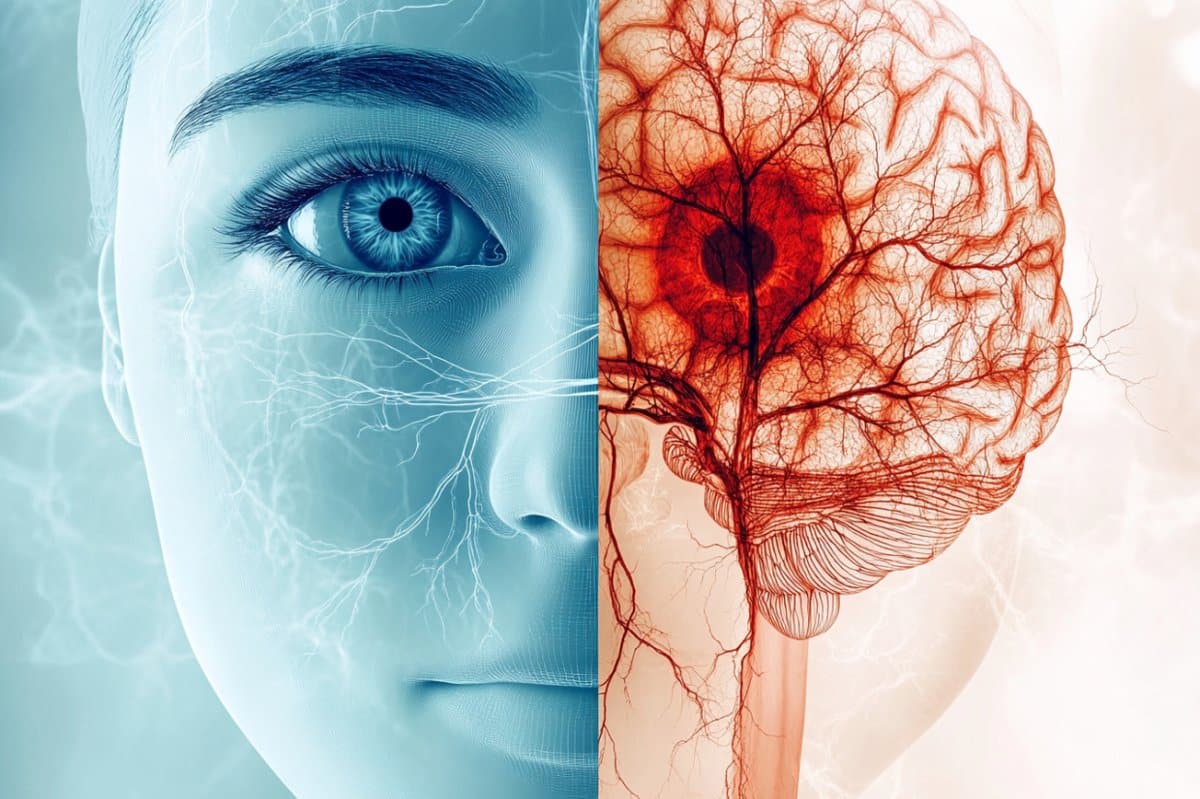Summary: A new study has found that blood vessels in the retina may hold early clues about a person’s risk of developing dementia. Researchers observed that narrower arterioles, wider venules, and thinner retinal nerve fiber layers were linked to higher dementia risk around midlife.
These eye changes may mirror brain changes tied to Alzheimer’s, offering a non-invasive way to detect risk earlier than current cognitive tests allow. Although still in early stages, the findings could lead to future use of AI in routine eye scans to help flag individuals at risk before symptoms arise.
Key Facts:
- Retinal Markers: Changes in retinal blood vessels and nerve layers were linked to increased dementia risk.
- Non-Invasive Insight: The retina may reflect brain health, offering an accessible screening option.
- Future Potential: AI-based eye scan analysis could one day assist early dementia detection.
Source: University of Otago
A new University of Otago – Ōtākou Whakaihu Waka study has found a link between our eye health and dementia.
Dunedin Multidisciplinary Health and Development Study researchers discovered the blood vessels at the back of the eye – called retinal microvasculature – can show early signs someone is at risk of developing dementia.

Co-lead author Dr Ashleigh Barrett-Young, of the Department of Psychology, says the findings link to previous work by members of the research team, “putting together pieces of a puzzle” when it comes to recognising early signs of dementia.
The findings are too premature to be applied in the real world yet, but research is continuing around the world.
“Treatments for Alzheimer’s and some other forms of dementia may be most effective if they’re started early in the disease course.”
Knowing who would benefit from early treatment is crucial, but difficult to do with current testing methods, which she hopes will improve in the future.
Cognitive tests aren’t sensitive enough in the early stages and a person may not be experiencing any decline yet, while other tests, like MRI and PET scanning, are expensive and not widely available.
“In our study, we looked at the retina which is directly connected to the brain,” she says.
“It’s thought that many of the disease processes in Alzheimer’s are reflected in the retina, making it a good target as a biomarker to identify people at risk of developing dementia.”
The study was co-led by Dr Aaron Reuben, of the University of Virginia, showcasing one of Otago’s many collaborations with universities around the world.
Published in the Journal of Alzheimer’s Disease, researchers used data from eye scans from the Dunedin Study’s age 45 assessment.
It is New Zealand’s longest-running longitudinal study and is considered the world’s most detailed study of human health and development.
The scans reveal narrower arterioles (the small blood vessels that carry blood away from the heart) and wider venules (the smallest veins which receive blood from capillaries), and thinner retinal nerve fibre layers (which carry visual signals from the retina to the brain) were associated with greater dementia risk.
Dr Barrett-Young says this was somewhat unexpected.
“I was surprised that venules were associated with so many different domains of Alzheimer’s disease – that suggests that it might be a particularly useful target for assessing dementia risk.”
Despite the findings, she reminds people not to panic.
“This research is still in an early stage, and we can’t predict your future looking at an eye scan,” she says.
“Hopefully, one day we’ll be able to use AI methods on eye scans to give you an indication of your brain health, but we’re not there yet.”
About this dementia and visual neuroscience research news
Author: Jessica Wilson
Source: University of Otago
Contact: Jessica Wilson – University of Otago
Image: The image is credited to Neuroscience News
Original Research: Open access.
“Measures of retinal health successfully capture risk for Alzheimer’s disease and related dementias at midlife” by Ashleigh Barrett-Young et al. Journal of Alzheimer’s Disease
Abstract
Measures of retinal health successfully capture risk for Alzheimer’s disease and related dementias at midlife
Background
Identification of at-risk individuals who would benefit from early intervention for Alzheimer’s disease and related dementias (ADRD) is critical as new treatments are developed. Measures of retinal health could offer accessible and low-cost indication of pre-morbid disease risk, but their association with ADRD risk is unknown.
Objective
To determine whether midlife retinal neuronal and microvascular measures are associated with ADRD risk-index scores and individual domains of ADRD risk.
Methods
Data were from the Dunedin Multidisciplinary Health and Development Study, a population-representative longitudinal New Zealand-based birth cohort study. 94.1% (N = 938) of living Study members were seen at age 45 (2017–2019).
Retinal neuronal (retinal nerve fiber layer (RNFL) and ganglion cell–inner plexiform layer (GC-IPL)) and microvascular (arterioles and venules) measures were used as predictors. Outcome measures were four top ADRD risk indexes (CAIDE, LIBRA, Lancet, and ADU-ADRI), and a comprehensive midlife ADRD risk index, the DunedinARB.
Results
Poorer retinal microvascular health (narrower arterioles and wider venules) was associated with greater ADRD risk (βs = 0.16–0.31; ps < 0.001). Thinner RNFL was modestly associated with higher ADRD risk (βs = 0.05–0.08; ps = 0.02–0.13). Follow-up tests of distinct domains of ADRD risk indicated that while RNFL associations reflected cardiometabolic risk only, microvascular measures were associated with diverse ADRD risk factors.
Conclusions
Measures of retinal health, particularly microvascular measures, successfully capture ADRD risk across several domains of known risk factors, even at the young midlife age of 45 years. Retinal microvascular imaging may be an accessible, scalable, and relatively low-cost method of assessing ADRD risk among middle-aged adults.






